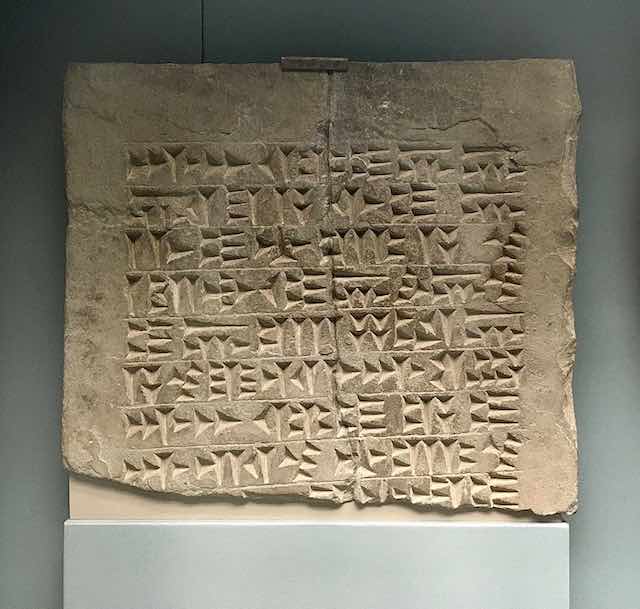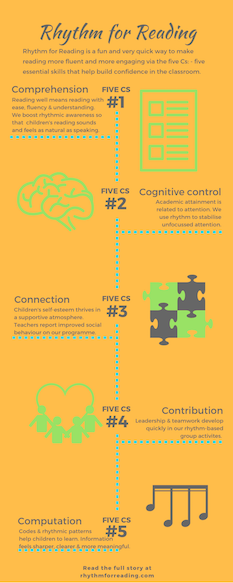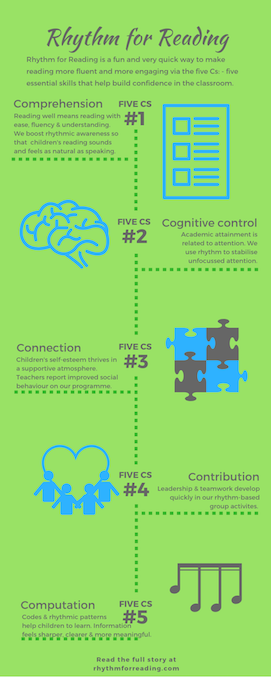The Rhythm for Reading blog
Rhythm at Home
2 April 2020
‘We’re all in this together’ - To some extent this is true, but I think we’re all having very different experiences of the lockdown. Many people are suffering the agony of losing loved ones to the disease. Many are facing hunger and hardship in the days and weeks ahead. Many feel the anxiety which hangs in the air.
How can rhythm help us? Here are a few suggestions and I’m sending you love and light as you read this.
For frustration and anger: Play music with strong rhythmic patterns and invite some movement from any part of the body willing to respond - perhaps start with a small nod of the head or tap a single finger. A critical voice may speak up. The music is simply our gift to ourselves - no inner commentary is necessary. Stay with the music and allow the patterns to weave their way through the body and mind. When it feels possible, allow the body move a little more until all the physical tension has melted into the music.
For anxiety, panic and grief: Play soothing, gentle, slow music to help ease the breath and the heart rate. Breathe deeply into the stomach to a count of at least six, several times a day is very soothing. Eat small amounts of food, chewing very slowly. Allow the sighs to move through the body like a balm. Comforting hugs from others may not be possible at this time, but I am sending you a hug right now as you read this. Our dreams are always available to us and sometimes we need to create new ones to move forwards again. When the right moment arrives, try drawing or writing about a new life in the future. By sharing our dreams with the page, we allow our hope and faith to grow stronger.
For procrastination: The rhythm of the body in a visualisation can help to overcome procrastination. Visualise doing the task that needs to be done, from getting started to bringing in the physical details of the place in your home where this is happening. Consider the time of day, the feelings of satisfaction and self-worth during the stages of this task. Focus on the joy of finishing; then create the scene for real. Are there any cushions? Is there a cup of tea? Bring everything that is necessary to complete the task. Make a start - simply get started by doing something small. Keep going and focus intently on the joy of finishing. Background music or background voices (perhaps in another language) are helpful for some people. Experiment with the volume to find the level that best supports focus and concentration.
For routines: Setting up a family routine is admirable and will be most successful if everyone is on board. Remember to build breaks into the day and to keep the goals small enough to be achievable. At weekends make sure that the days feel less structured and be sure to celebrate the wins week by week. A star chart is invaluable for creating a growing sense of accomplishment (adults need them too) and will help to pump-up the momentum of each day.
Language: Rhythm in language tells us what people really mean. We are all dealing with different levels of stress at the moment and it can be helpful to be prepared for tricky conversations.
Say this sentence aloud - first very quickly, and then very slowly, ‘Mary cried’.
Vowel sounds (italics) that are uttered quickly, tell us that the person speaking is delivering information, perhaps having already analysed or evaluated a situation. The speaker is coming from a head-centred, judgmental space.
Vowel sounds that are uttered slowly tell us that the person is probably feeling compassion and cares about the situation. This person’s voice signals that they are coming from a heart-centred, loving space.
In tricky conversations, it may be easier to keep the communication flowing if we slow down the vowel sounds. By saying, ‘Oh’ and ‘Ah’ and ‘No,’ very slowly, we can programme ourselves for compassion. This could prove invaluable, should a tricky conversation come along. Take care everyone.
Knowledge, culture and control Part 2
1 March 2020
In this post I’ve blended ideas from several inspiring books, listed below. History, in my view is often cyclical, rather than linear. As we move rapidly into climate crisis, artificial intelligence (AI) and a school curriculum dominated by science, technology, engineering and maths (STEM), I wonder how relevant the curriculum of today will be in five years, given the fast-pace of change.
Since the introduction of the English Baccalaureate, (EBacc) the place of creative disciplines in the school curriculum, which provide an arena for critical debate, rebellion and the development of radical ideas has been devalued, and I wonder, to what end?
Transition from a Pagan to a Christian worldview
During the formation of the Holy Roman Empire, huge cultural shifts came into play. The suppression of the arts in society, regarded as pivotal in the enforcement of Christianity stemmed from the perspective of Saint Augustine. He wrote extensively on music, claiming that rhythm could be classified into four levels from the highest which was spiritually-aligned, down to the lowest level level, that stimulated the flesh.
Monks of the order used physical force against ordinary people who celebrated pagan feasts with music and dancing. Music with a strong beat was strictly banned, as was dancing (Blaukopf, 1992). Intellectuals were persecuted. for example, Hypatia - a mathematics scholar in Alexandria had been lynched in 415 CE for her ‘blasphemous’ study of ancient Greek texts (Rovelli, 2007). By the end of the 5th century, the Great Library at Alexandria had disappeared, and in 529 CE the Platonic academy in Athens was closed by decree of Christian emperor Justinian (Pieper, 2020).The significance of the Great Library was that it housed all of the books in existence, as well as being part of a hub for scholarship, achieved through practices of reason, logic, rhetoric and academic freedom. The achievements of the Greek scholars at Alexandria were impressive. For example, Eratosthenes, in 235 BCE calculated that the world was round, giving its circumference and its diameter; Heron of Alexandria created the world’s first steam engine.
Fanatically, the Christian authorities set to rewriting the knowledge and wisdom of the pervious (pagan) era, notably maintaining that the Earth was flat. Within this context we find Boethius (c.470- c.524 CE), a classically-educated statesman and philosopher, keen to find the middle road between reason and faith. He was executed for treason, shortly after having resolved the schism between the early Christian Church in Rome and Constantinople. Boethius wrote Consolation of Philosophy during his imprisonment, and this text became the foundation of medieval scholasticism (Shiel, 2020).
Appropriation of Greek scholarship
After 500 years of teaching and intellectual activity in cathedral schools and monasteries, early medieval universities were chartered by a Papal Bull. Each university was founded under different circumstances:- at Bologna (1088), Paris (1150) and Oxford (1167), and with differing levels of academic freedom. Highly influential across Western Europe, the liberal arts were taught, although the Christian Church had appropriated ancient Greek curricula for its own purposes, retaining only the structure and main elements of the system (Bernstein, 2000).
Medieval scholasticism, light on rigour and politically-inclined, attempted to reconcile classical reason with traditional early Christian dogma, but with limited success. Students taking the first part of the degree, the trivium, were taught word-related principles: grammar, logic and rhetoric, before taking the second part, the quadrivium which explored the physicality of the world through arithmetic, astronomy, geometry and music.
The trivium of the time had strong religious connotations; similarly, the corresponding quadrivium was adapted to suit the dogma of the day (Bernstein, 2000). For example: music was taught only through the disembodied, polyphonic rhythm (rather than the Greek rhythmos) and in astronomy, students were taught that the Earth was flat (Blaukopf. 1992).
Renaissance and reading
The tension between traditional Augustinian dogma and the classical texts of Boethius eventually gave way in the early Renaissance. Music, dancing and decorative arts, along with academic freedom in scientific thinking had been suppressed for at least a millennium across Western Europe and quickly reappeared.
Music regained its metrical ratio-based system; its integrated rhythmic nature was reinstated and dancing immediately became fashionable. The publication of articles promoting the rise of the importance of the vernacular supported the spread of reading, which soon became widespread, further weakening the authority of traditional Christian dogma.
Transition from post-industrial to digital
There is a linear feel from the Renaissance and Enlightenment years, through to the present day. However, in the contemporary devaluing of arts subjects in the school curriculum with the advent of the English Baccalaureate, we seemingly appear to be cycling back the dark ages with the curbing of academic and creative freedom.
Many young people face a bleak future following poverty in childhood and also having been deprived of an opportunity to develop a creative outlet for self-expression. At the same time, many communities have been impoverished by austerity.
Given that global hubs such as London are the economic areas towards which a disproportionate amount of the world’s digital enterprise, wealth and wealthy have been attracted, the transition to digital has created sharp economic inequalities between the digital hubs and post industrial regional centres, which acutely lack investment and have suffered chronic deprivation.
Positivism
Alongside the glitz of digital, there is a mindset that blindly accepts what appears on the screen with too little criticality. At best, the data-driven positivist perspective on knowledge is no more than instrumental, because its influence is dependent on the empirical tools and the technology of the day. At its worst, positivism commits the grave error of confusing the ends with the means, because it is not contextualised and it is not subject to critical debate (Rovelli, 2007).
The ‘knowledge economy’ promised a fiscal flow generated by the unlimited availability of knowledge via the Internet. The quality of such knowledge is often very poor, as has been shown by its influence on voting behaviour in democratic elections. Unscrutinised, low-grade, data-driven knowledge that supports the spread of technology in relation to health, education, trade and food supply puts society at risk of sub-standard ideas and policy.
Disciplined creativity
The true nature of science is critical, exploratory and visionary (Rovelli, 2007). As such, science is grossly limited if it is reframed through positivism as a mere producer of testable predictions. To protect our societies from positivism, disciplined creativity is essential if breakthroughs and radical thinking are to flourish in the ‘knowledge economy’.
Creative thinking is best nurtured in the domain of the arts subjects, an arena where it is essential to take disciplined risks, to implement ideas and to work through creative issues.
Disproportionate emphasis on STEM
The dominance of STEM subjects in the school curriculum will train our young people to think logically, but in order to solve the substantial problems facing us all in the coming decades, they also need the courage to think creatively, to make cognitive leaps rather than continuing to step slowly in a linear fashion, outpaced by AI.
What is taught in schools today will be out of date by the time pupils start their careers, so the disproportionate emphasis on STEM is seemingly short-sighted. It is only with a greater emphasis on disciplined creativity in the curriculum, that pupils will have the confidence to invent, innovate and implement the solutions, breakthroughs and radical new ideas that are needed for the future.
References
Bernstein, B. 2000 Pedagogy, Symbolic control and Identity: Theory, research, critique, Revised edition, Lanham, MA; Rowman & Littlefield Publishers, Inc,
Blaukopf, C (1992) Musical Life in a Changing Society: Aspects of Musical Sociology, Amadeus Press
Pieper J. (2020) ‘Scholasticism’ in Britannica, https://www.britannica.com/topic/Scholasticism, accessed 29.2.2020, at 10.37
Rovelli, C. (2007) Anaximander, trans. Marion Lignana Rosenberg, Yardley, PA., WestholmePublishing
Shiel, J. (2020) ‘Anicius Manlius Severinus Boethius’ https://www.britannica.com/biography/Anicius-Manlius-Severinus-Boethius accessed 29.2.2020, at 10.57
Knowledge, Culture and Control Part 1
4 February 2020Scientific knowledge is best developed in a context of free speech. Arguing for free debate, where being mistaken or wrong is integral to scientific discovery, Rovelli, in his wonderful book, ‘Anaximander’ charts the link between the history of the Greek alphabet and the beginnings of scientific thinking.
The earliest writing
The first form of writing, known as cuneiform was invented in 3400 BCE in southern Iraq, as described by art historian, Zaineb Bahrani. According to Bahrani, the earliest writing was pictographic, which was straightforward enough to decipher, but expanded when the signs for ox and fish and so on came to be used for unrelated objects and ideas, based on a system of association via similar sounds and meanings. This partly phonetic and partly pictographic code became abbreviated into cursively written wedge-shaped signs on tablets of clay, which were systematised and adopted throughout the ancient Near East.
The oldest script to be discovered was written in Uruk, in the Sumerian language, - a language unrelated to Semitic, Indo-European, Turkie or other language groups of that era. The script was quickly adopted into the Akkadian language, which was an early Semitic language, a relation of modern-day Hebrew, Arabic and Syriac-Aramaic. The first word lists and directories for interpreting the script were compiled in the third millennium BCE as the Mesopotamians became the first translators. The adoption of the script for diplomatic purposes spread widely across the region, including kingdoms of Babylonia, Syria and Egypt.
The first professional writers
According to Bahrani, the importance of connecting words with things, connecting writing with reality, was that it generated intellectual thought and scientific reasoning. The script offered a representational system with the capacity to signify the physical world as well as abstract concepts. The standardisation of the script provided a reliable means of communication and had implications for the Mesopotamian world view. However, detailed knowledge of the script’s 800 characters was protected by the scribes and mainly used for political ends, to reinforce the legitimacy of the semi-divine dynastic rulers, claiming a lineage apparently descended from heaven. The illustration here, shows a cuneiform inscription on a stone tablet dedicated to the god Haldi at a temple built by Menua, King of Urartu, in east Turkey dating from about 700 BCE.

Rovelli described a similar situation in Greece in the second millennium BCE. During this era, the Mycenaean period, the Greeks dominated Crete, Rhodes, Cyprus, Troy, Phonecia, Byblos and Palestine. The Mycenaean civilisation had inherited the well-known script, Linear B from the ancient Cretans. Linear B was used intensively in Crete during a period when the court possessed a highly organised administrative system of taxation, military enlistment and record keeping of ownership of property and slaves, all of which was managed by the professional scribes of the central palace. Here too, we see scribes enforcing political control through the power of the written word.
Greek trade with neighbouring nations resumed in the seventh and eighth centuries BCE, following the collapse of the Mycenaean civilisation in 1000 BCE and a period of economic and social difficulty. A new style of writing was inherited from the Phoenicians and Caananites at about 750 BCE. The Phoenician alphabet contained only consonants, whereas the Canaanites had developed a simplified system in which vowel sounds were used and this reduced the number characters to 24. As an Indo-European language, Greek was phonetically simpler than the Semitic languages and the new alphabet, was used to directly represent the utterances of the human voice - a system that did not require word lists, but could be deciphered without an arduous apprenticeship.
Scientific knowledge
So when writing became accessible for Greek citizens in the seventh and sixth centuries BCE, knowledge was no longer exclusively for the privileged, the scribes and the autocratic kings. Rather, writing was widely shared by the emerging ruling class at the birth of democracy, which relied upon forthright public criticism and open debate.
Public debate among the ruling class replaced the absolute power of semi-divine kings and traditional wisdom of priests. Weak ideas and theories were dismissed through this new system of shared power. Rovelli urges us to consider that it is through sharing, criticising and scrutinising knowledge, that we uphold scientific values. Sharing, criticising and scrutinising ideas and theories is the most rigorous way to test knowledge. Weaker theories and ideas can be rejected, and stronger ones can be refined in this way. We must guard against the desire for complete knowledge or definitive knowledge. This would involve closed-mindedness. Rather, science produces the best available knowledge at the time from an open-minded, questioning perspective.
Rovelli makes an important point: From the perspective of scientific thinking, knowledge expands because of a lack of certainty, and is driven by an awareness of the immensity of human ignorance. A lack of certainty is a strength rather than a weakness. It is a strength fuelled by important traits that are cultivated by scientists: the confidence to ask questions, the courage to observe and to critique, and the persistence to challenge with a readiness to radically rock the boat.
References
Bahrani, Z. (2017) Mesopotamia: Ancient Art and Architecture, Thames & Hudson, London
Rovelli, C. (2011) Anaximander, (Trans. Marion Lignana Rosenberg), Westholme Publishing, Yardley, Pennsylvania
My Three Wishes for Schools in 2020
1 January 2020

1. Let Schools be Schools
Many schools in the UK are also food banks; their classrooms are filled with donated clothes and toys. The generosity is heart-warming, but growing child poverty is a crisis of grim-realities and long-term consequences.
4.5 million children are living in poverty in the UK (trusselltrust.org) and teachers have had no choice, but to feed hungry pupils. They are constantly buying food for children to take home because the fridge and food cupboard are empty. Hungry children cannot concentrate for a single minute - I have seen young people in school faint from hunger.
For economically disadvantaged children and young people to gain the qualifications that will secure a prosperous future, a great deal of educational impetus is required. Teachers play a vital role in nurturing children’s capacity for learning and building trajectories for academic achievement, but at present, this role is diluted by having to think about hunger day after day.
Schools are highly responsive in tailoring their resources to meet the needs of their communities. However, school budgets have had to stretch to feed the growing numbers of children living in poverty. It is a matter of grave concern that resources are being diverted away from education to meet the children’s most basic survival needs.
2. Take action to prevent exclusions
A wave of redundancies due to cuts to school budgets, has been mirrored by an increase in the rate of school exclusions, undermining inclusivity and equality in the education system. Pupils who have benefited from close support and mentoring from teaching assistants in mainstream classrooms, but have been unable to manage unaided, have found themselves removed from school or placed in alternative provision. These disruptions have compromised not only their access to the curriculum, but also their chances of gaining qualifications.
3. Schools need modern educational values and larger budgets in 2020
Modern educational values and larger budgets are needed to inspire the learning of all children and young people. These should be delivered across complementary disciplines, and through effective systems that:
- Empower imaginative thinking and curiosity,
- Spark and focus creativity,
- Cultivate dynamism, intensity and drive.
- Provide adequate administrative support,
- Reduce teacher workload via a higher teacher-to-pupil ratio and,
- Allocate time and funds for teachers’ professional development.
Tolerance and Respect in Britain
2 December 2019

Inclusivity in a Welcoming Britain
We are almost at the middle of this decade I couldn’t be more hopeful that we are about to see a huge wave of open-heartedness and humanity. As we welcome children back into schools after the break, we can reassure them that their school is a school where they know they can thrive and enjoy learning and growing within a loving and inclusive community.
What really matters? It’s the small gestures of reassurance, of kindness, of gratitude. It’s the ethos of caring and listening. It’s the supportive atmosphere that encourages everyone to try something new, even when that might feel daunting.
I once interviewed a headteacher just before his retirement. His school had been rated ‘Outstanding’ and I asked him whether he thought he’d done something differently. I knew that there had been changes to the curriculum and that his leadership was so strong that the whole community knew him. I was very moved when he told me, that the whole school had been transformed by one thing - as a school, they had looked after the most vulnerable children far more than ever before. The result had been that everyone felt the benefit. Every child knew and appreciated that this was indeed a safe and caring environment. the conversation was so special. I will never forget it and it took place in perhaps the most socially disadvantaged community in England.
in the Rhythm for Reading Programme, a safe and caring environment lies at the heart of what we do. We know that when the learning is paced so that everyone is on board that the group response remains strong. When the group response is stronger, the learning is faster, deeper and more confident. So yes, I agree with this Headteacher’s point of view.
We can apply this more broadly: by standing together with the most disadvantaged and supporting them, we are stronger and more confident as a community and everyone prospers.
Stereotypes
Stereotypes are meaningless and belong in the past. They are old and outdated. Now that we are moving into a new era of health, strength and optimism, we can move forwards and leave the polarity and division of the past eight years where they belong -in the past.
Diversity
On the other hand, whenever there’s a healthy balanced range of opinions, of voices, of faces on mainstream media I inwardly cheer in celebration of our country’s rich and beautiful diversity, because, deep down all is well. With so much at stake, we must work together to resist discrimination of all kinds and call out any stereotypes as soon as we can. Harmonious sweetness is the prize and it belongs to us all. For this reason, we can thrive in healthy debate. We can enjoy differences of opinion. We can rejoice in multiplicity of perspectives and broaden and build our way into the future.
Groupthink
‘Groupthink’ (a term coined by Irvin Janis) is an unremarkable ability. Groupthink involves ‘people pleasing’ and staying quiet when you should speak up. When most people in a group are in agreement, it takes courage to be that person of integrity, who cannot follow the others. Groupthink shuts such voices of dissent down, silencing people so that what remains is an unhealthy inbreeding of ideas that from time to time, arises in politics in particular (Janis, 1972).
Research done in the 1970s showed that in roles where one group of people dominated another group, the behaviour of both groups needed to be carefully monitored. The notorious Stanford Prison Experiments explored human behaviour in role-play. Undergraduate psychology students from ‘normal’, mainly middle class families volunteered as participants and were randomly assigned to roles either as prison guards, or as inmates in a specially constructed jail in the university campus. After only six days the treatment of the prisoners became so abusive that the project, which should have run for fourteen days had to be abandoned. In this experiment, Zimbado showed that undergraduate students with no previous history of cruelty (ie they were educated, reasonable people) had the capacity to treat prisoners sadistically, particularly when following orders.
Clearly, in our social groups, we humans have a dark side - a capacity to behave together in ways that would be unthinkable at an individual level.
This matters in everyday life, but particularly in leadership. We must engage in and celebrate opportunities healthy debate, and cultivate communities that prioritise care for the most socially disadvantaged. We must all take responsibility to truly honour each other. We need to call out stereotypes for everyone’s sake so that together we cultivate an atmosphere of happiness, balance and peace in our society.
References
Janis, I (1972) Victims of Groupthink: A Psychological Study of Foreign-Policy Decisions and Fiascos (2nd Edition) Boston, MA. Houghton Mifflin.
Zimbado, P.G. (1999) Stanford Prison Experiment: A Stimulation Study of the Psychology of Imprisonment Conducted at Stanford University http://www.prisonexp.org [accessed 1/12/19]
Rhythm, Breath and Climate Change
19 November 2019
Last year, I went through a major rethink about my approach to the Rhythm for Reading blog. To ‘incubate’ the new outlook I’ve spent a great deal of time exploring new themes and scoping out a broader awareness of rhythm in everyday life.
Deadly wildfires
The shift started unexpectedly twelve months ago. I happened to be working in the San Francisco Bay Area in November, as the State of California braced for the driest month of the year, which typically generates a high fire risk. You may remember the wildfires that blazed out of control at that time. More than 80 people tragically lost their lives in the deadly ‘Camp Fire’ that completely destroyed the town of Paradise. For eight days, the Bay Area lay under a thick blanket of smoke. From my hotel window and when travelling to work I could see that the condors had stopped riding the thermals high in the sky. There was hardly any sunlight, and the air quickly became the filthiest on the planet. Nature seemingly had shutdown, but we humans had stayed calm and carried on regardless. The freeways were absolutely crammed with vehicles, pumping fumes into the already saturated air.
Inequality
Although I was lucky enough to be staying in air-conditioned accommodation during the worst days of pollution, I worked with people who were not so fortunate. They told me about the dreadful effects of the smoke on their young children and elderly neighbours. Given that an hour of exposure to the Camp Fire smog was judged to be the equivalent of chain-smoking ten cigarettes, it was unsurprising that poorer people in the Bay Area, those without air-conditioning living some four hundred miles from the wildfires, were struggling with their breathing, feeling nauseous and even collapsing. This situation made me realise the extent to which I have taken clean air for granted. I have always gratefully acknowledged the work done by trees to reduce carbon dioxide during the night, but naively, I have assumed that this natural recycling process was sustainable. Following the Camp Fire, I no longer presume that forests will continue to maintain the fragile balance of gases that sustain life on our planet.
Toxic air
In California last year, deadly particulate matter from the burning of the forest caused the toxicity in the air. In other words, we were inhaling carbon particles from the very trees that we need in the long term to recycle the air. In the same twelve month period, it has been heart-breaking to see fires started deliberately, that have caused enormous devastation in the Amazon Forest, the ‘Lungs of the Earth’, and tragically, huge areas of New South Wales, Australia are ablaze as I write this.
Rhythm
Like me, you may have been shaken recently into a new awareness of our responsibility for Earth’s atmosphere. Is this the beginning of the end? Historically, seasonal rhythms have driven the cyclical flooding of rivers, as seen in the beautiful hieroglyphs of Ancient Egypt. The predictability of dry seasons and rainy seasons has supported the cultivation of food crops for twelve thousand years. Going back even deeper into pre-history, when an alternating rhythm of warmer and cooler periods caused the ice-sheets of North America and Scandinavia to advance and retreat, hunter-gatherer peoples became highly adaptive and innovative.
According to anthropologist Professor Brian Fagan, Cro-Magnon humans, Neanderthals and many of the larger mammals proved to be temperature tolerant, demonstrating ample capacity to adapt during climactic shifts of the rhythmic, ‘Dansgaard-Oeschger (D/O) oscillation’ (Fagan, 2010, p.55). There was also a remarkable explosion of creativity that followed warmer periods of climate change, marked by magnificent art in the caves of South Africa, Spain, Germany, Austria and France.
Breath
Unlike the hunter-gatherers, who breathed pristine unpolluted air in conditions that were on average considerably cooler than those of today, we inhabit a rapidly warming planet, in which unprotected forests as well as coral reefs are lost every year. The situation that we face is pushing us towards the upper limit of our temperature tolerance. Unfortunately, industrial technologies and economic models have encouraged a false perception of our independence of nature, which has led to widespread abuse of the natural world.
Earth’s indigenous peoples on the other hand, have maintained values and technologies that are closely aligned with nature (Fagan, 2011). Living and breathing in harmony with nature, they have maintained sustainable cultural traditions, that offer a balance between ideals of freedom and security. Now, we must all work together to restore rhythm and balance, to protect and nurture higher values of respect and appreciation for Earth’s resources.
References
Fagan, B. (2010) Cro-Magnon: How the ice-age gave birth to the first modern humans, Bloomsbury Press.
Fagan, B. (2011) The First North Americans: An archeological journey, Thames and Hudson
Rhythm and Computation 5/5
5 November 2018I had no idea that I would be writing a post on computation whilst working in Silicon Valley – I am amazed by the coincidences that life delivers. It seems that music and technology go together here and I look forward to exploring some of the ideas behind the Rhythm for Reading programme in relation to the principles of computational thinking.
Historically, the word compute derives from Latin roots: com (together) and putare (to settle an account). In the French language of the 17th century, the verb ‘computer’ meant to reckon or to calculate the amount. As we know only too well from the reporting of negotiations between the UK and EU, it is important to attend to the broad principles as well as the details. From the perspective of computer science, a systematic approach is used to align the broad principles and the fine details by following a process involving four cornerstones of computational thinking: decomposition, pattern matching, abstraction and algorithms.

Decomposition: In general, music is associated with ‘composition’ rather than decomposition. However, playing any piece of music involves decomposition. Before performing, musicians are faced with a problem: how should the music sound and feel? They answer this question by considering musical elements such as, form and tempo (overall layout and speed), harmonic structure (organisation of key changes in relation to the form), rhythmic and melodic features (beats, riffs, tunes, patterns and repetitions), as well as the texture - the distribution of the sounds in relation to each other. Each musical style has a fairly typical blueprint consisting of certain types of form, harmonies, textures, rhythms and melodies which musicians constantly refine with experience.
Pattern recognition: For many people, the appeal of music lies in its attention grabbing patterns, the hypnotic qualities of repeating beats and the deeply satisfying musical feel of certain riffs and grooves. This is not surprising because like other mammal species, our early development took place surrounded by the rhythm of our mother’s heartbeat, respiration and digestion patterns. New born infants can detect changes in rhythmic patterns of language and music with remarkable sensitivity. It seems that pattern recognition begins very early on in our development and continues throughout life.
In computational thinking, the extraction of general information from a recognised pattern (e.g. all dogs have four legs) involves looking for similarities and disregarding everything else. Well, when we listen to music and extract the beat from the complete musical sound – (just before we begin nodding or tapping along with it), we have extracted the constantly recurring ‘generalised’ information and brought this to the front of our awareness. In this way, the beat becomes useful as an organisational device because we naturally perceive the other more varied and changeable sounds in relation to it.
Abstraction: The process of abstraction, knowing what to retain and what to ignore as part of pattern recognition is an acquired discipline that becomes second nature with practice. For example, finding the beat and focusing on it (perhaps whist taking exercise) is a powerful form of orientation in musical sound that most people naturally adopt. The process of recognising rhythmic patterns via the extraction and abstraction of the beat often happens spontaneously and extremely quickly – in a matter of a few seconds, depending rather on the quality of the musical sounds.
Algorithms: An algorithm is a sequence of steps required to build a model of a solution to a problem, such as a series of instructions or rules to make a cup of tea. To programme a robot to make a cup of tea would be complex because the single instruction ‘pour’ for example would need to be broken down into all the tiny action pieces (involving angles, weight, resistance, timing etc). Returning to music, having abstracted the beat from musical sounds, it is possible to rebuild a sense of the organisation of the music in relation to the beat. For example, there may be recurring catchy tunes or rhythmic patterns that make the music instantly recognisable. The beat is the organisational principle in our brain’s perception of musical sounds. Similarly, the beat is also the organisational principle of musical sounds as represented in musical notation. The representation of music in music notation involves a framework called a musical staff, consisting of five horizontal lines. The system of notation is rule-based and the information it contains is extremely precise. However, like an algorithm, only the necessary details are included; all other musical information is inferred by (stylistically aware) musicians.
In Rhythm for Reading sessions, there is a strong emphasis on beats, riffs, patterns and repetitions, as well as on an awareness of the form and structure of a piece of music. After a couple of sessions, even very young children spontaneously apply the principles of decomposition and pattern recognition. Their innate awareness of sound prompts them to extract and abstract the beat and to feel the organisation of melodic and rhythmic patterns around the beat. They love to discover the patterns in musical notation and can use these to explain the overall organisation of simple pieces of music.
It’s been fun to play a little with the idea of explaining musical processes in terms of computational thinking – there is certainly plenty of common ground. However, there is also an important difference. While computational thinking occurs in a sequence, which is later integrated by a computer, the musical equivalents of decomposition, pattern recognition, abstraction and algorithms are integrated by the human brain’s capacity to read musical notation, to elaborate the notation and produce musical sounds in time with others. Not only do we integrate all of these processes naturally, we find it highly rewarding to do this <in sync>.
Rhythm and Contribution 4/5
1 October 2018Contribution is a tremendously positive aspect of human nature. At this time of year in many schools, it’s possible to detect a special sense of dignity emerging from a collective sense of contribution. Central to the season of Harvest Festival, contribution is a natural response to our awareness of our of abundance and supply. We pause to appreciate the hard work of the farmers and the benefits of a favourable climate, essential for the long-term sustainability of crops and livestock. It is a time to reflect and give thanks for the magnificent, vibrant beauty of our planet. Sharing the gifts of our abundance with the wider community reminds us that the gift of contribution is also the gift of belonging.
In classrooms, a quite different notion of contribution exists. Students’ contribution in the classroom is evaluated by teachers. Yet at the same time, contribution is restricted by the limited amount of time teachers are able to allocate each unit of work. Tension around contribution in the classroom arises between the need to cover the curriculum and the time students may need to assimilate concepts before they feel ready to reflect and engage via questions or discussion. A possible solution is to allow more time. Expanding the time allowed for students’ contribution seems to slow the whole process of learning down. However, this may be time well spent, particularly for lower attaining students, who may learn differently or simply need more time to process the information, as argued by Rowe, (1986).
Contribution is also a form of social action. In the context of Harvest Festival, there is a sense that everybody contributes what they can, but in a classroom the act of contributing to a curriculum that may or may not seem relevant and relatable can be stressful for some students. Accordingly, ‘children tend to feel vulnerable in school’ (Pollard, 1987, p.4), where they are subject to a process of assessment and rules. Children learn to adapt, to cope with power and discipline of the teacher, to avoid situations that may lead to humiliation or disrespect, particularly in front of peers in the classroom. Seen through this lens, contribution can be complex, troubling for students, and very different to the contribution that takes place in the school hall during a Harvest Festival.

In Rhythm for Reading sessions, contribution is extremely important. Each session lasts only ten minutes in length, so the students need to commit themselves to tasks from the very beginning of the session. Every second is dedicated to contribution. The main difference between students’ contribution in Rhythm for Reading sessions and the classroom is that they contribute simultaneously as a group rather than as individuals. This reduces the sense of vulnerability considerably. The contribution that they make as a group involves consideration of others; for example in the way that they blend their voices together so that no one is louder or quieter than anyone else. This achieves a true sense of group cooperation in which everyone can feel that the energies of contributing and belonging are truly symbiotic.
Although the pressures on teachers and students are seemingly increasingly difficult to resolve, Rhythm for Reading by its nature is non-competitive, harmonious and inclusive. As such, it bridges the chasm between the starkly contrasting forms of contribution occurring in the classroom and the school hall. Rhythm for Reading makes use of rhythmic patterns rather than words to develop reading skills, yet builds fluency, cognitive control and confidence, while cementing group cohesion and commitment to learning.
Pollard, A. (1987). Introduction: New Perspectives on Children, In A. Pollard (Ed.) Children and their primary schools: A new perspective, (p. 1- 11), The Falmer Press, taylor & Francis Inc., London, New York & Philadelphia
Rowe, M. (1986). Slowing down may be a way of speeding up! Journal of Teacher Education, 37, 43-50.
